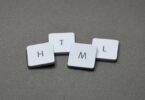The purpose of the primary key in a database is to:
(a) unlock the database
(b) provide a map of the data
(c) uniquely identify a record
What is a DMS?
(a) A programming language used to create databases
(b) A software application for managing and organizing data
(c) A network protocol for transferring data between servers
What is a barcode designed to do?
(a) Show out-of-date products
(b) Describe beers and liqueur
(c) Chart ballet exercises
(d) Represent data
What is data modeling?
(a) Designing user interfaces for database applications
(b) Creating backup copies of the database
(c) Organizing data in spreadsheets for analysis
(d) Defining the structure and relationships of data in a database
What is the main characteristic of an object-oriented database management system?
(a) It models data using objects, classes, and inheritance.
(b) It primarily stores data in relational tables.
(c) It uses a flat file structure for data storage.
(d) It is best suited for simple data storage needs.
Related: AI quiz questions and answers
A data warehouse:
(a) can be updated by the end users
(b) contains numerous naming conventions and formats
(c) is organized around important subject areas
(d) contains only current data
What is a primary characteristic of a NDBMS?
(a) It represents data using tables with rows and columns.
(b) It organizes data using a graph-like structure with complex relationships.
(c) It provides a centralized data storage model.
SQL stands for
(a) Standard Query Language
(b) Structured Query Language
(c) Specific Query Language
(d) Special Query Language
What is the purpose of concurrency control?
(a) To manage user authentication and access permissions
(b) To optimize DB queries for better performance
(c) To ensure that multiple users can access and manipulate data simultaneously without conflicts
(d) To encrypt sensitive data stored in the database
Which of the following is logical database structure ?
(a) Network
(b) Tree
(c) Chain
(d) All of these
Which of the following is a common example of a RDBMS?
(a) Microsoft Excel
(b) MySQL
(c) Python
(d) Windows Explorer
What is an entity in data modeling?
(a) A physical storage location for data
(b) A user interface element for data entry
(c) A distinct object or concept about which data is stored
In a relational database, this is a data structure that organizes the information about a single topic into rows and columns.
(a) Block
(b) Record
(c) Tuple
(d) Table
What is a key characteristic of a RDBMS?
(a) It uses a hierarchical data structure.
(b) It primarily stores data in text files.
(c) It organizes data into tables with predefined relationships.
(d) It is suitable for unstructured data storage.
Which of the following places the common data elements in order from smallest to largest
(a) character, file, record, field, database
(b) character, record, field, database, file
(c) character, field, record, file, database
(d) Bit, byte, character, record, field, file, database
Related: Basic hardware quiz
What is a limitation of Hierarchical DBMS compared to RDBMS?
(a) Hierarchical databases lack data integrity constraints.
(b) Hierarchical databases cannot store textual data.
(c) Hierarchical databases do not support data storage on disk.
(d) Hierarchical databases have limited flexibility for querying and reporting.
Periodically adding, changing and deleting file records is called file
(a) updating
(b) upgrading
(c) restructuring
(d) renewing
What is a key advantage of using a DBMS over a traditional file system for data storage?
(a) DBMS offers centralized data management, reducing data redundancy and inconsistency.
(b) File systems allow more efficient querying and data retrieval.
(c) DBMS provides better compatibility with different operating systems.
(d) File systems are more suitable for handling large amounts of structured data.
A partitioned data set is most used for
(a) storing program data
(b) stroing ISAM files
(c) a program or source library
(d) storing backup information
Which issue can occur if proper concurrency control is not implemented in a multi-user DBMS environment?
(a) Data redundancy
(b) Data corruption
(c) Deadlocks and data inconsistencies
(d) Inefficient indexing
In an Object-Oriented Database Management System, what is an “object”?
(a) A record in a flat file structure
(b) A group of related tables in a database
(c) A data value stored in a table column
(d) An instance of a user-defined data structure with attributes and methods
Related: what is the full form of USB in computer?
A goal of data mining includes which of the following?
(a) To explain some observed event or condition
(b) To confirm that data exists
(c) To analyze data for expected relationships
(d) To create a new data warehouse
How do distributed transactions differ from single-site transactions?
(a) Distributed transactions involve multiple servers and require coordination for consistency.
(b) Single-site transactions only involve data retrieval, while distributed transactions involve data modification.
What does the term “data integrity”?
(a) The accuracy, consistency, and reliability of data stored in the database
(b) The practice of securing data from unauthorized access
(c) The ability of the DBMS to store and retrieve data efficiently
In a HDBMS, what is the role of the root segment?
(a) It contains the actual data records.
(b) It represents the highest level of the data hierarchy.
(c) It stores relationship information between tables.
(d) It handles data storage and retrieval operations.
Customer Database is used by_
(a) Individuals
(b) Institutions
(c) Builders
(d) Marketing experts
What is a key characteristic of a HDBMS?
(a) It represents data using tables with rows and columns.
(b) It stores data in a network of interconnected nodes.
(c) It organizes data in a tree-like structure with parent-child relationships.
(d) It supports complex queries and joins between multiple tables.
What type of workload is an In-Memory DBMS particularly well-suited for?
(a) Batch processing of large volumes of data
(b) Hierarchical data organization
(c) Transactional processing of financial data
(d) Complex analytical queries involving multiple joins
Barcodes store information using
(a) punched holes
(b) dots
(c) thick and thin tines
(d) all of the above
Which decade saw the emergence of the first computerized dbms?
(a) 1950s
(b) 1960s
(c) 1970s
(d) 1980s
Related: software engineering quiz with answers
When data changes in multiple lists and all lists are not updated, this causes:
(a) data redundancy
(b) information overload
(c) duplicate data
(d) data inconsistency
Which type of DBMS is specifically designed to handle documents and unstructured data?
(a) RDBMS
(b) NoSQL DBMS
(c) Hierarchical DBMS
(d) OODBMS
What is a key characteristic of an OODBMS?
(a) It represents data using classes, objects, and inheritance.
(b) It organizes data in a network of interconnected nodes.
(c) It stores data using a hierarchical structure.
(d) It relies on fixed schema and predefined relationships.
Data representation is based on the number system, which uses two numbers to represent all data.
(a) binary
(b) biometric
(c) bicentennial
(d) byte
Which model was introduced in the early history of DBMS to represent data in a hierarchical manner?
(a) Relational model
(b) Network model
(c) Hierarchical model
(d) Object-oriented model
Which language is used to interact with a database by submitting queries to retrieve specific data?
(a) DDL
(b) DML
(c) DCL
(d) DQL
___ is processed by the computer into information.
(a) Data
(b) Numbers
(c) Alphabets
(d) Pictures
Which type of data relationship indicates that each record in one entity is associated with only one record in another entity?
(a) (1:N) Relationship
(b) (N:M) Relationship
(c) (1:1) Relationship
What is the primary advantage of a Distributed Database Management System?
(a) It allows for efficient single-server processing.
(b) It centralizes data storage for easy management.
(c) It provides improved data availability and fault tolerance.
(d) It eliminates the need for data replication.
Related: Photography exam questions and answers
The ___ contains data descriptions and defines the name, data type, and length of each field in the database.
(a) data dictionary
(b) data table
(c) data record
(d) data field
A collection of related files is called a?
(a) character
(b) field
(c) database
(d) adjusting
Which language is primarily used for defining the structure of a database, creating tables, and specifying constraints?
(a) Data Manipulation Language
(b) Data Definition Language
(c) Data Control Language
(d) Data Query Language
What is an advantage of a Network DBMS compared to a Hierarchical DBMS?
(a) Network databases are more suitable for storing unstructured data.
(b) Network databases provide a more flexible query language.
(c) Network databases require fewer resources for implementation.
The purpose of the primary key in a database is to :
(a) unlock the database
(b) provide a map of the data
(c) uniquely identify a record
(d) establish constraints on database operations
What is an advantage of an OODBMS compared to a RDBMS?
(a) OODBMS provides better support for complex queries.
(b) OODBMS requires less storage space for data.
(c) OODBMS is more suitable for handling structured data.
(d) OODBMS eliminates the need for data modeling.
Related: Powerpoint questions and answers for students
What is the common goal of using a NewSQL DBMS?
(a) To eliminate the need for data replication and distribution.
(b) To optimize data storage for small-scale applications.
(c) To achieve high scalability and performance while maintaining ACID compliance.
(d) To replace traditional SQL databases with NoSQL alternatives.
What is a “set type” record used for?
(a) It stores data in a flat file format.
(b) It represents a hierarchical relationship between records.
(c) It organizes data into tables and columns.
(d) It defines one-to-many relationships between records.
What is the primary advantage of using PostgreSQL as an RDBMS?
(a) It has limited support for advanced SQL features
(b) It is closed-source software
(c) It offers robust support for complex queries and data types.
(d) It is only suitable for small-scale databases







Hello. And Bye.